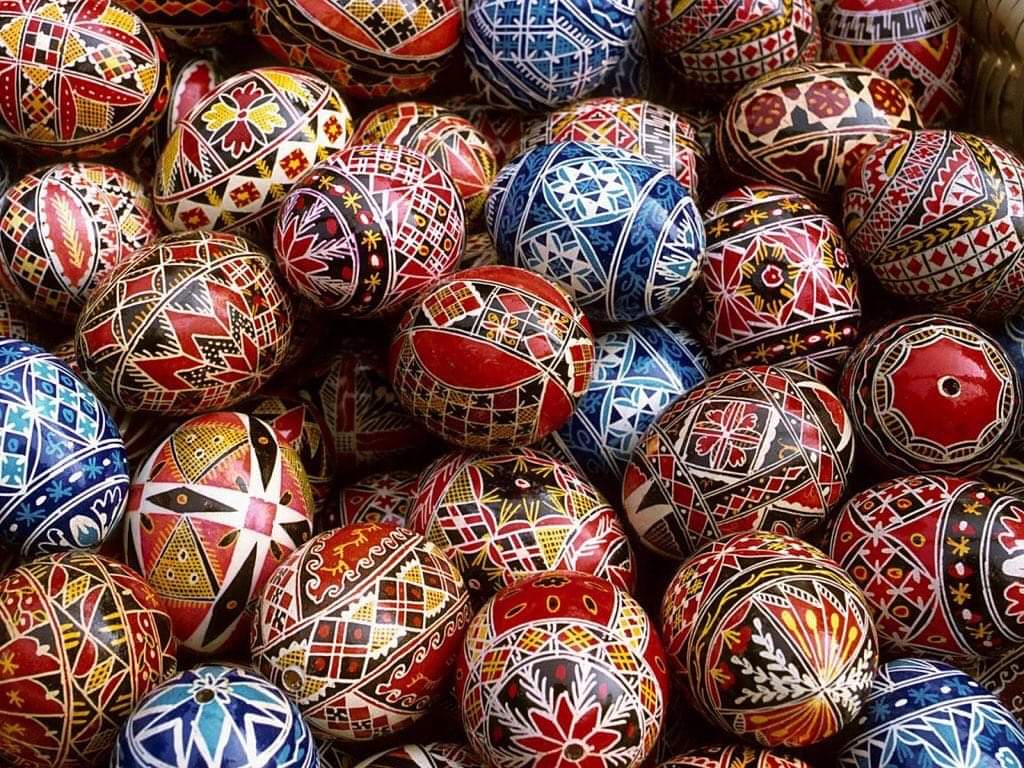![]() Megjelenés helye Serbia - Bulvár és szórakozás - 05 May 2024 08:55 - 8
Megjelenés helye Serbia - Bulvár és szórakozás - 05 May 2024 08:55 - 8
☦️ Celebrating the Rich Traditions of Orthodox Easter in Slavic Countries ☦️
🇧🇾 Belarus: Orthodox Easter in Belarus is a cherished time steeped in age-old customs and heartfelt celebrations. An ancient rite has preserved in the village of Zaprudie, in the Glubokoe District: children and adults visit houses while singing cheerful songs and wishing prosperity, health and rich harvests. Young participants are generously presented with Easter eggs, sausages, cookies, sweets and money. After going around their native village, the ‘volochebniks’ – as the ceremony participants are called – arrange a traditional feast. They share the collected goodies, knock Easter eggs and continue festive celebration with their parents and friends...
🇷🇺 Russia: Easter marks the end of a forty day fast that commenced at the time of the Maslenitsa; meat, dairy, fish and alcohol have been off-limits to the faithful. The kids have eggs and everyone loves kulich, a traditional cake packed full of fruit and nuts, as well as paskha, a cream cheese cake. Easter is the day of abundant food. After the Great Lent the best and the most delicious food is on tables. The main meals are ritual ones: Easter cakes, kulich and painted eggs. The old Easter tradition in Russia is to send and deliver gifts to poor families, relatives and strangers, orphanages, hospitals and prisons. Wondering beggars are not an exception: people say that "from Easter to the Ascension Christ with the Apostles travel on earth testing everyone for mercy and kindness".
🇺🇦 Ukraine: Ukrainian Easter celebrations are a beautiful melding of traditional Christian practices, folklore, and ancient pagan symbolism. The enchanting art of "Pysanky," intricately decorated Easter eggs, captivates with its symbolism of prosperity and protection. Crafting pysanky is a cherished tradition passed down through generations. They hold significant cultural and historical importance in Ukrainian heritage, playing a vital role in preserving national traditions and identity.
🇧🇬 Bulgaria: Orthodox Easter in Bulgaria is a fusion of solemnity and merriment. The other main culinary attraction on Easter day is the roast lamb. Similar to kozunak, the advertisements for fresh meat can be seen everywhere a few weeks before the holiday. In my family, we serve our lamb with sauteed young potatoes and green salad (lettuce, cucumbers, and radishes). The idea behind eating this particular dish is sacrificing the innocent creature as a ritual, like the innocent son of God was sacrificed because of worldly human sinners.
🇷🇸 Serbia: Serbian Orthodox Easter is a time-honored symphony of spirituality and customs. The ceremonial lighting of the "Easter fire" symbolizes the triumph of light over darkness, embodying hope and renewal. The spirited "egg tapping" game, where participants compete to keep their egg uncracked, fosters friendly competition and bonds of friendship. The crucial thing for Easter in Serbia is to color your first egg red. That egg is called čuvarkuća, which means guardian of the house. It’s the most significant Easter egg, and it stays in the house until the next-year Easter. It’s believed it protects the home and the family from sickness and other harm. A guardian egg from the previous year is sometimes put into a dish with water and some herbs.
🇲🇰 North Macedonia: In North Macedonia, Orthodox Easter resonates with cherished traditions and heartfelt reverence. For Easter, housewives knead special bread called "pogacha" that is decorated with braids and in which are made hollows where Easter eggs are placed. And this custom varies from place to place. In many parts is kneaded a sweet bread called "kozinak". In some areas, sweets and eggs are hidden in the home and in the yard, and children begin to search for them immediately after Easter breakfast. In the city environments, the home is decorated with various new decorations like plastic eggs and various decorations that can be purchased today in special stores. In rural areas, the house is decorated primarily with flowers.
🇲🇪 Montenegro: Orthodox Easter in Montenegro is a harmonious blend of ancient customs and vibrant festivities. The tradition of "Tucanje jaja" or egg tapping, where beautifully decorated eggs are tapped against each other until one remains unbroken, symbolizes strength and resilience. The mesmerizing "Lazarice," intricate floral arrangements made from willow branches and wildflowers, adorn homes and churches, symbolizing the arrival of spring and new beginnings. The solemn processions and candlelit vigils on Holy Saturday create a serene atmosphere of reflection and devotion, culminating in the jubilant "Resurrection service" on Easter Sunday, filled with music, prayer, and a shared sense of spiritual renewal
Let us embrace the richness of Orthodox Easter in Slavic countries, where each tradition, folklore, and custom weaves a tapestry of cultural heritage and spiritual connection. Wishing everyone a blessed and joyous Orthodox Easter! 🕊️🌷


Jutalmazás
Gral AguilarmarkuinHozzászólások (8)

🇷🇸🇷🇸🇷🇸

Spanish?

@Gral Aguilar, next time !

ne panimaem nićevo piši po naški

Happy Easter orthodox brothers 🇬🇪 🇷🇸

You could write about Greek and Romanian customs too. They also celebrate Easter with us.

@OPAO i write juste for Slavic Orthodox this time. Next time.



